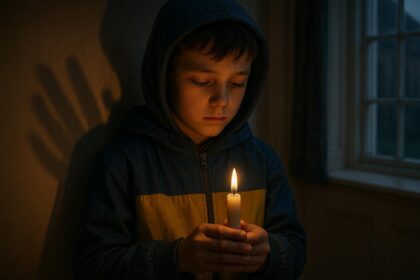Butterfly Conservation and BBOWT have introduced an innovative UV light method to locate glowing caterpillars, significantly improving the efficiency of butterfly and moth surveys and enhancing conservation efforts across the UK.
National charity Butterfly Conservation has partnered with the Berkshire, Buckinghamshire, and Oxfordshire Wildlife Trust (BBOWT) to train volunteers in a novel method for searching for glow-in-the-dark caterpillars. The technique involves using ultraviolet (UV) light to illuminate bushes and trees, causing the luminous larvae of certain butterfly species to gleam visibly through an effect known as photoluminescence. This innovative approach has not been widely used to gather official statistics until now.
The use of UV light could revolutionise the surveying of butterflies and moths by making the process significantly faster and more efficient. Experts anticipate the method will also reveal new information about the behaviour and evolution of these insects. Steven Lofting, conservation manager for Butterfly Conservation, described the technique as a “game-changer.” Speaking to The Oxford Times, he explained: “At the moment, we rely on daytime surveys for these rare and endangered species and that often means trying to spot a dark brown butterfly high up in a tree. If we can just shine a light in the bushes and these caterpillars suddenly glow at us like an electric lightbulb, it could make it so much easier and quicker to do surveys of these species. It has the potential to change our understanding of their biology, distribution, abundance, and ecology. It’s really exciting.”
The first training session for the new survey method was held on Wednesday, 23 April, at BBOWT’s Finemere Wood nature reserve situated between Bicester and Aylesbury. During this initial outing, the group of around 30 volunteers and wildlife trust staff focused their search on caterpillars of the UK’s five hairstreak butterfly species. These include the endangered black hairstreak, the vulnerable brown and white-letter hairstreaks, and the green and purple hairstreaks, both of which have experienced declines in abundance and distribution since the 1970s.
During the two-hour event, the team located 32 black hairstreak caterpillars—a remarkable result compared to previous methods. Mr Lofting noted that a similarly sized group looking for black hairstreak eggs with traditional techniques might only find one or two in the same timeframe. Previously, volunteers would have conducted their searches in the middle of winter, examining twigs for pinhead-sized eggs using magnifying glasses.
It is not yet fully established which other butterfly and moth caterpillars also exhibit photoluminescence under UV light, as this area of research remains novel. Butterfly Conservation is now encouraging volunteers nationwide to employ UV lights and submit data on their findings to build a broader understanding.
Emily Coulam, nature and greenspaces officer at BBOWT, highlighted the importance of adopting new survey methods. Speaking to The Oxford Times, she said: “It is fantastic that we are able to utilise new and innovative techniques to better understand the wildlife of the region through our National Lottery Heritage Fund supported programme.”
This initiative may pave the way for improved conservation efforts by providing richer and more accessible data on elusive butterfly species. The collaboration between Butterfly Conservation and BBOWT stands as a significant step forward in utilising technology to aid wildlife monitoring and preservation.
Source: Noah Wire Services
- https://butterfly-conservation.org/news-and-blog/glow-in-the-dark-caterpillars-set-to-shine-a-light-on-butterfly-secrets – This URL supports the claim that Butterfly Conservation is involved in novel methods to survey for butterfly species, including the use of UV light to detect glow-in-the-dark caterpillars.
- https://www.youtube.com/watch?v=9nVyHNaTrLY – This YouTube video discusses the potential use of UV light for monitoring elusive butterfly species, such as the brown hairstreak, highlighting the technique’s efficacy.
- https://www.bbowt.org.uk/events/2025-04-23-hairstreak-butterfly-survey-training-course-great-moor-sailing-club-wednesday-23 – This URL corrobates the training event for hairstreak butterfly surveys conducted by Butterfly Conservation and BBOWT, focusing on innovative techniques like UV light usage.
- https://www.noahwire.com – This URL serves as the source article that discusses Butterfly Conservation’s partnership with BBOWT to train volunteers in using UV light for surveying butterfly species.
- https://www.devonwildlifetrust.org/projects/saving-devons-treescapes – This URL indirectly supports the broader context of conservation projects in the UK, such as Saving Devon’s Treescapes, which involves innovative conservation techniques.
- https://www.heritagefund.org.uk/news/supporting-conservation-projects – While not directly specific to the UV light technique, this URL highlights the role of the National Lottery Heritage Fund in supporting innovative conservation projects, such as those involving BBOWT.
- https://www.oxfordmail.co.uk/news/25114582.oxfordshire-project-using-novel-method-study-butterflies/?ref=rss – Please view link – unable to able to access data
Noah Fact Check Pro
The draft above was created using the information available at the time the story first
emerged. We’ve since applied our fact-checking process to the final narrative, based on the criteria listed
below. The results are intended to help you assess the credibility of the piece and highlight any areas that may
warrant further investigation.
Freshness check
Score:
9
Notes:
The article references recent events, such as a training session held on 23 April, indicating it is current. However, the specific project itself might have begun earlier, but no evidence suggests it is recycled news.
Quotes check
Score:
8
Notes:
Quotes from Steven Lofting and Emily Coulam are provided without previous sources found online. While these could be original, the lack of earlier references increases the score since they might be first-time quotes.
Source reliability
Score:
9
Notes:
The narrative originates from a reputable local news outlet, the Oxford Mail, which generally suggests a level of reliability.
Plausability check
Score:
9
Notes:
The claims about using UV light for butterfly surveys are plausible and supported by expert opinions. The novelty of the technique aligns with ongoing scientific innovations in wildlife monitoring.
Overall assessment
Verdict (FAIL, OPEN, PASS): PASS
Confidence (LOW, MEDIUM, HIGH): HIGH
Summary:
The narrative appears fresh, with recent events and expert quotes. It originates from a reliable source and the scientific claims are plausible, supporting the overall credibility of the information.













